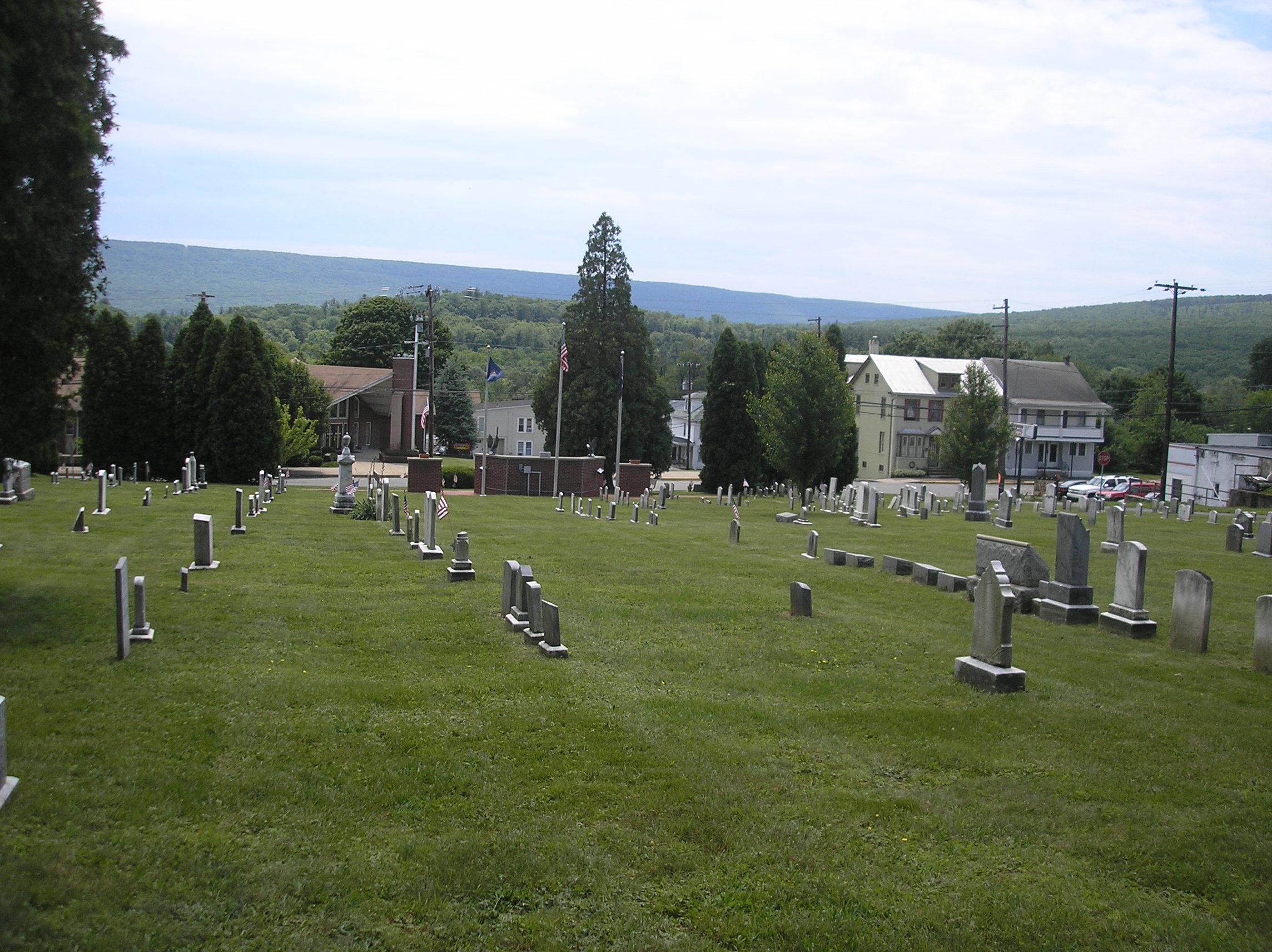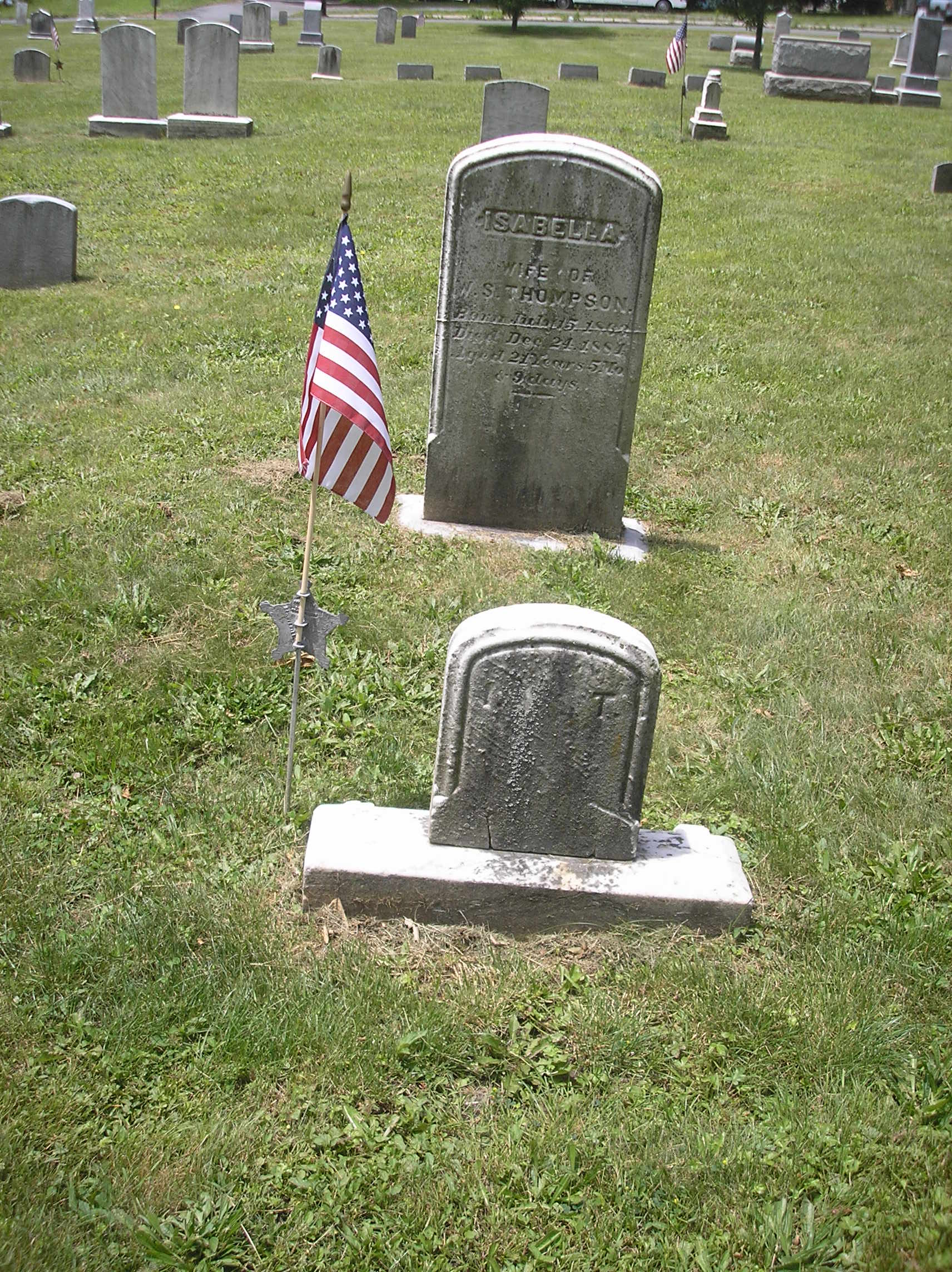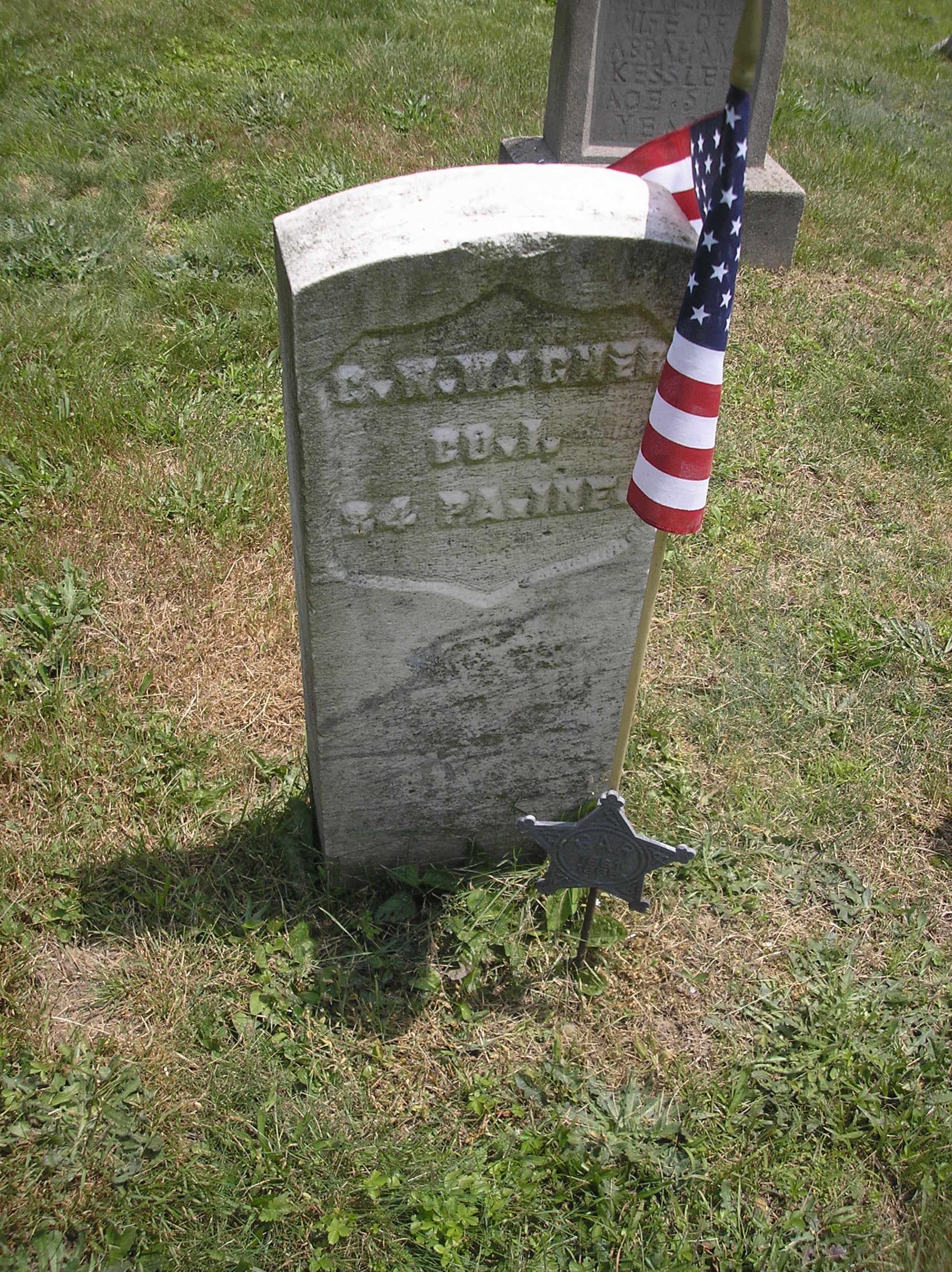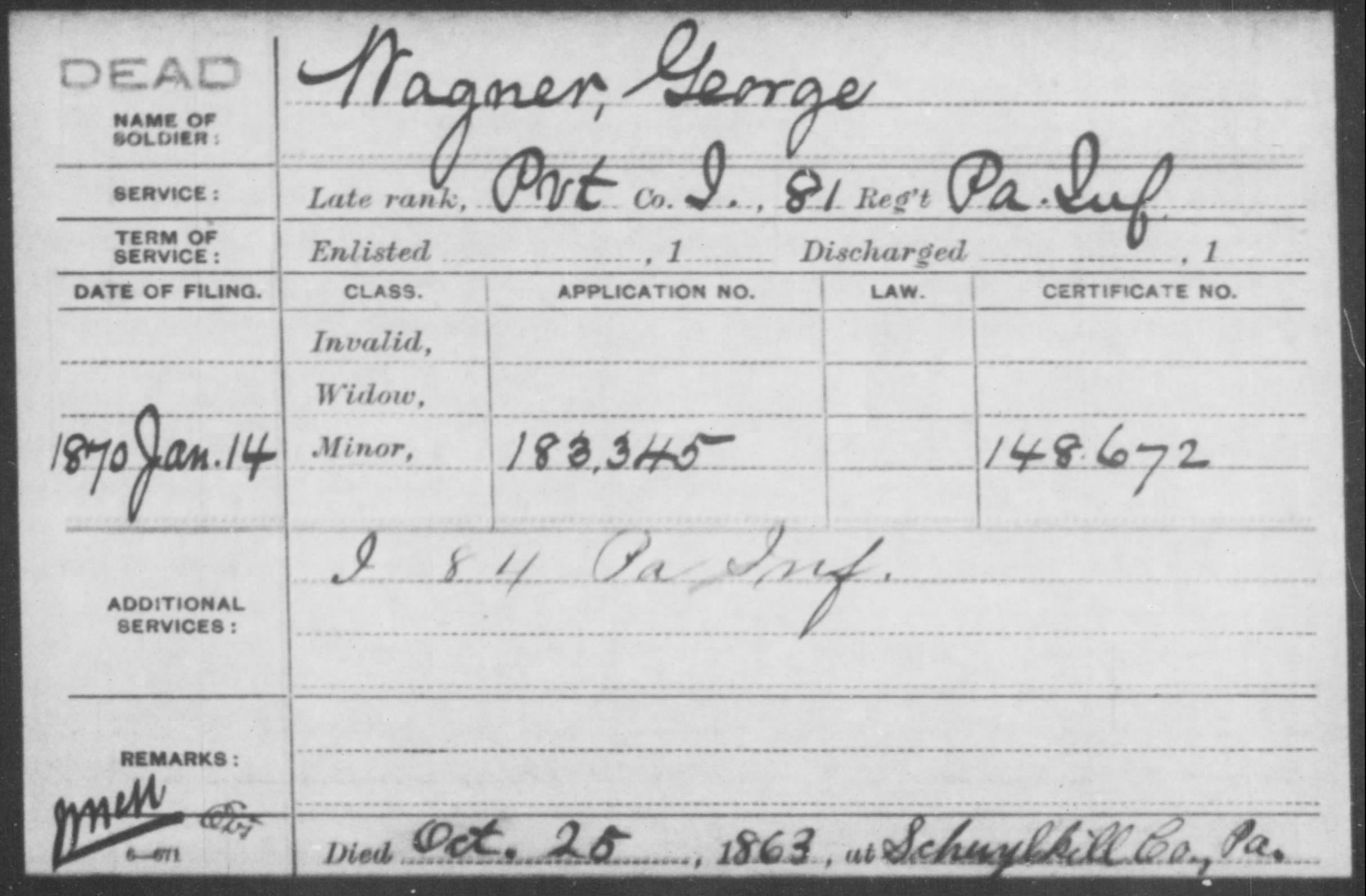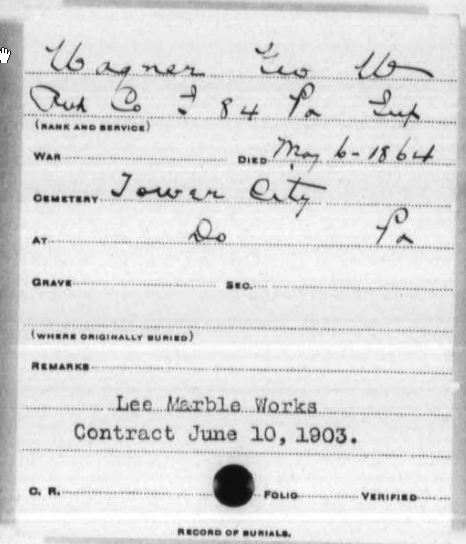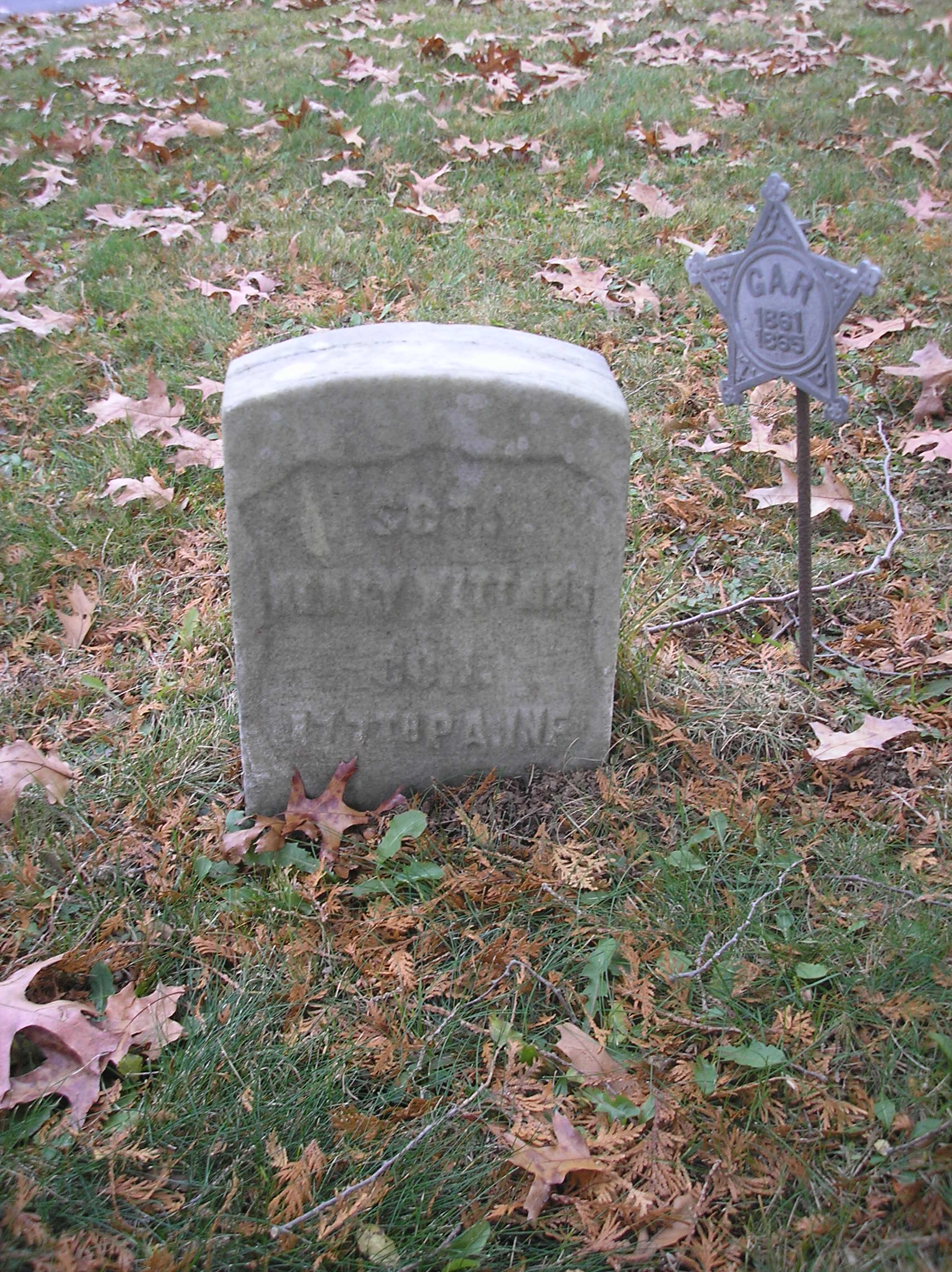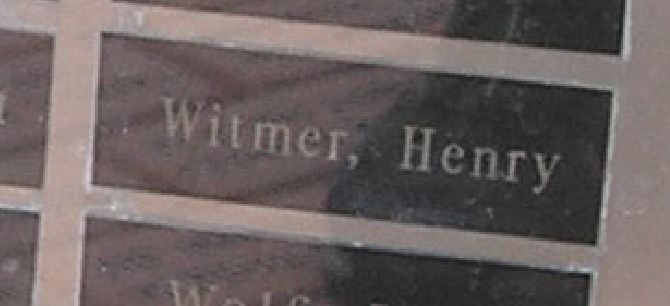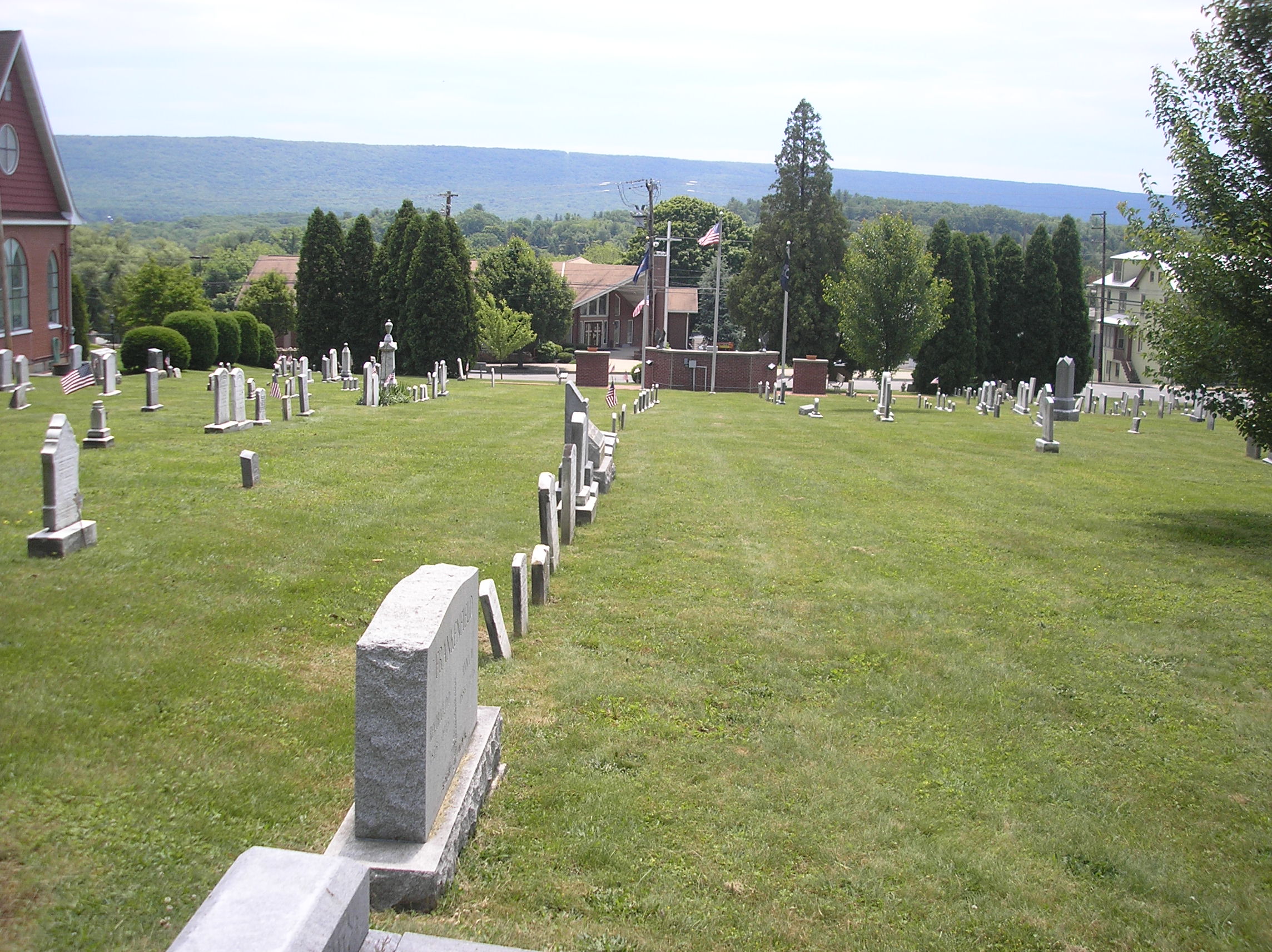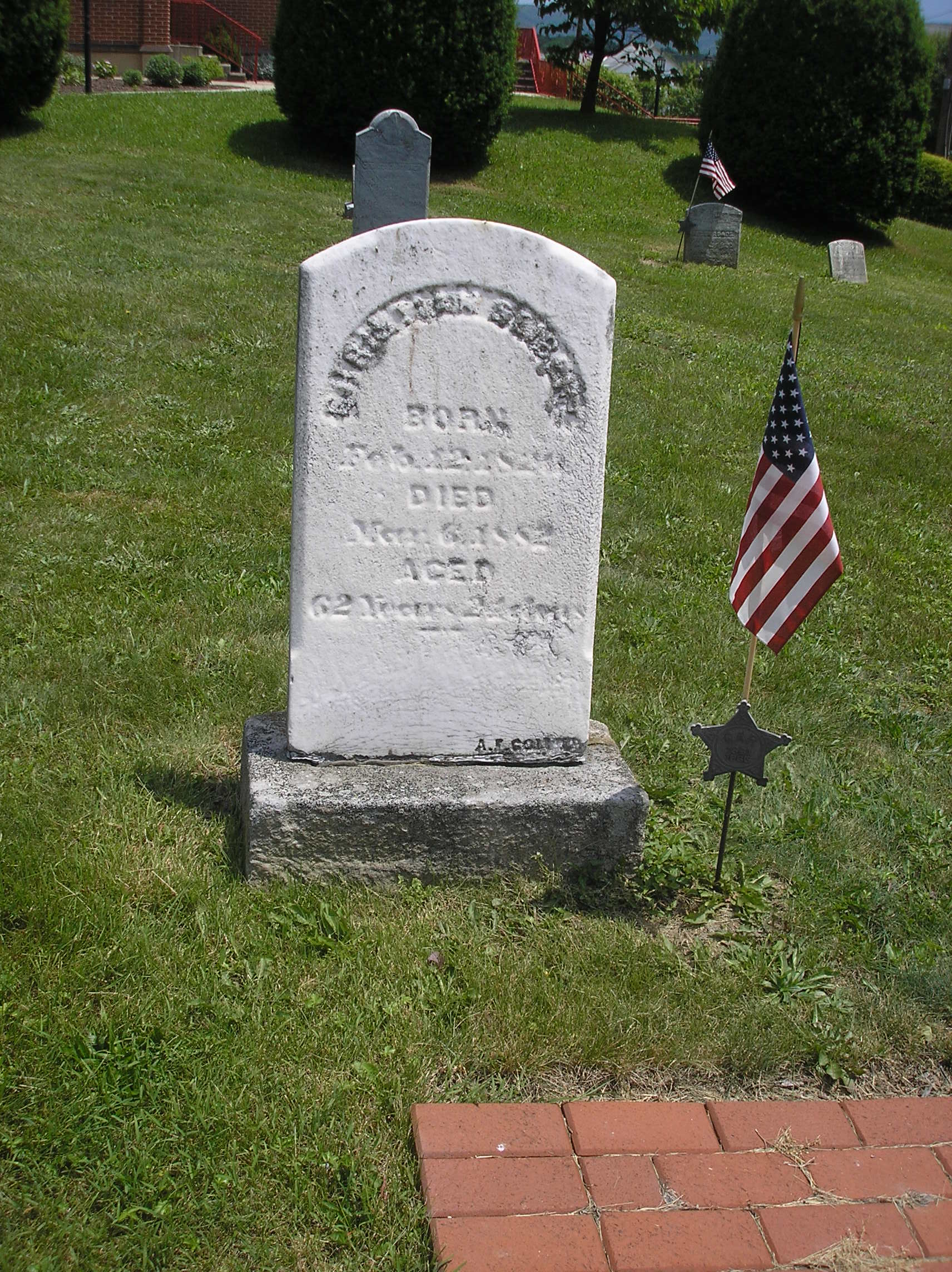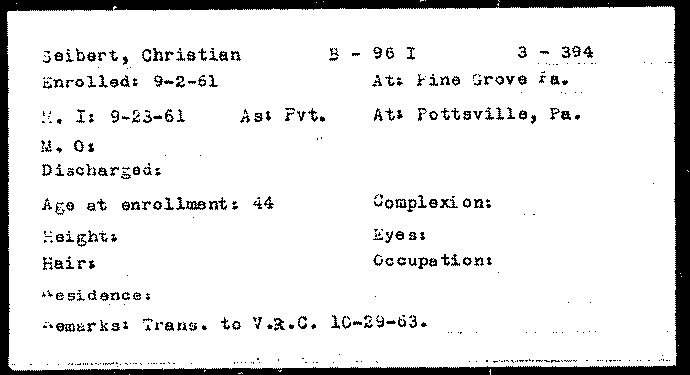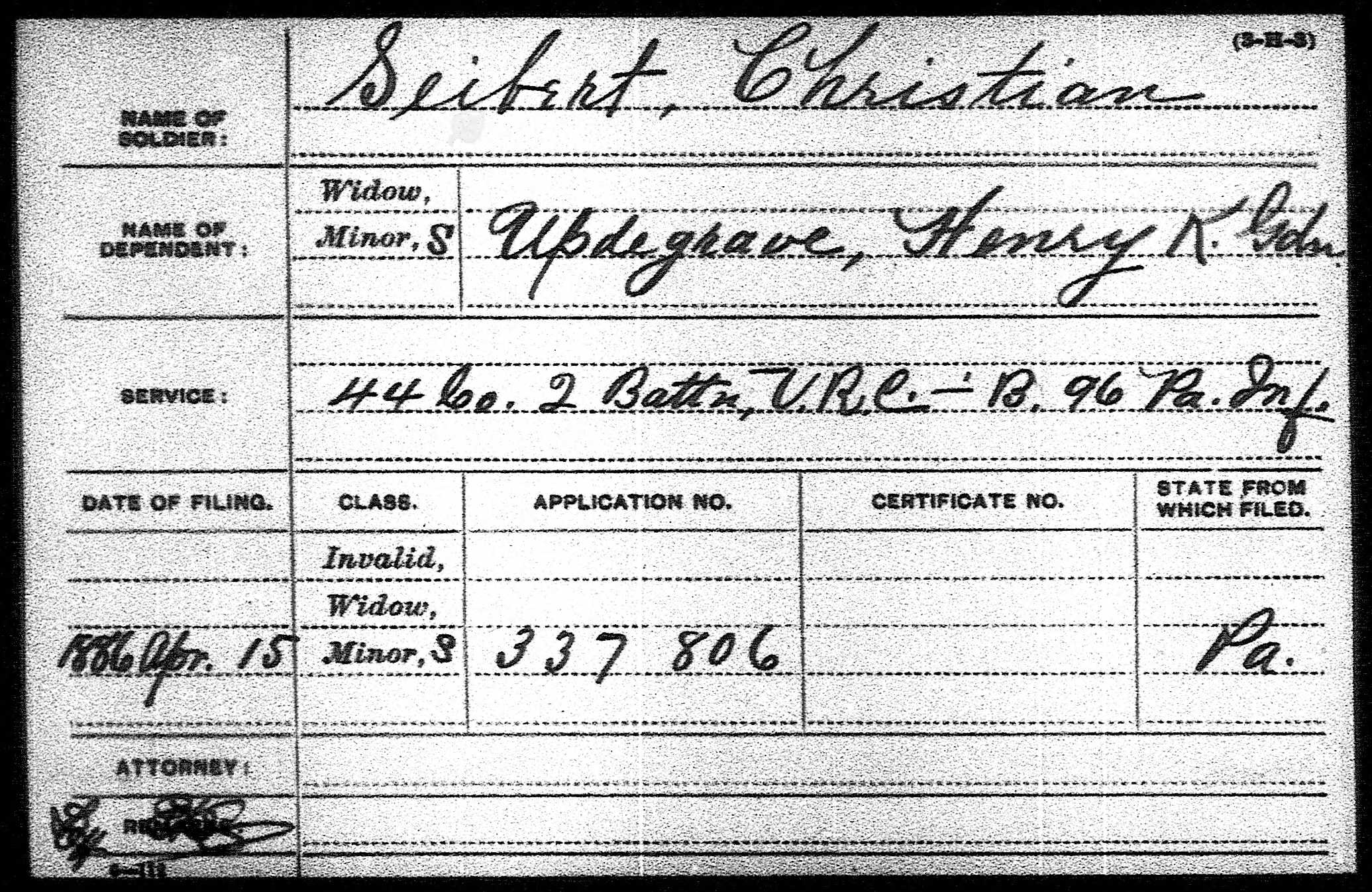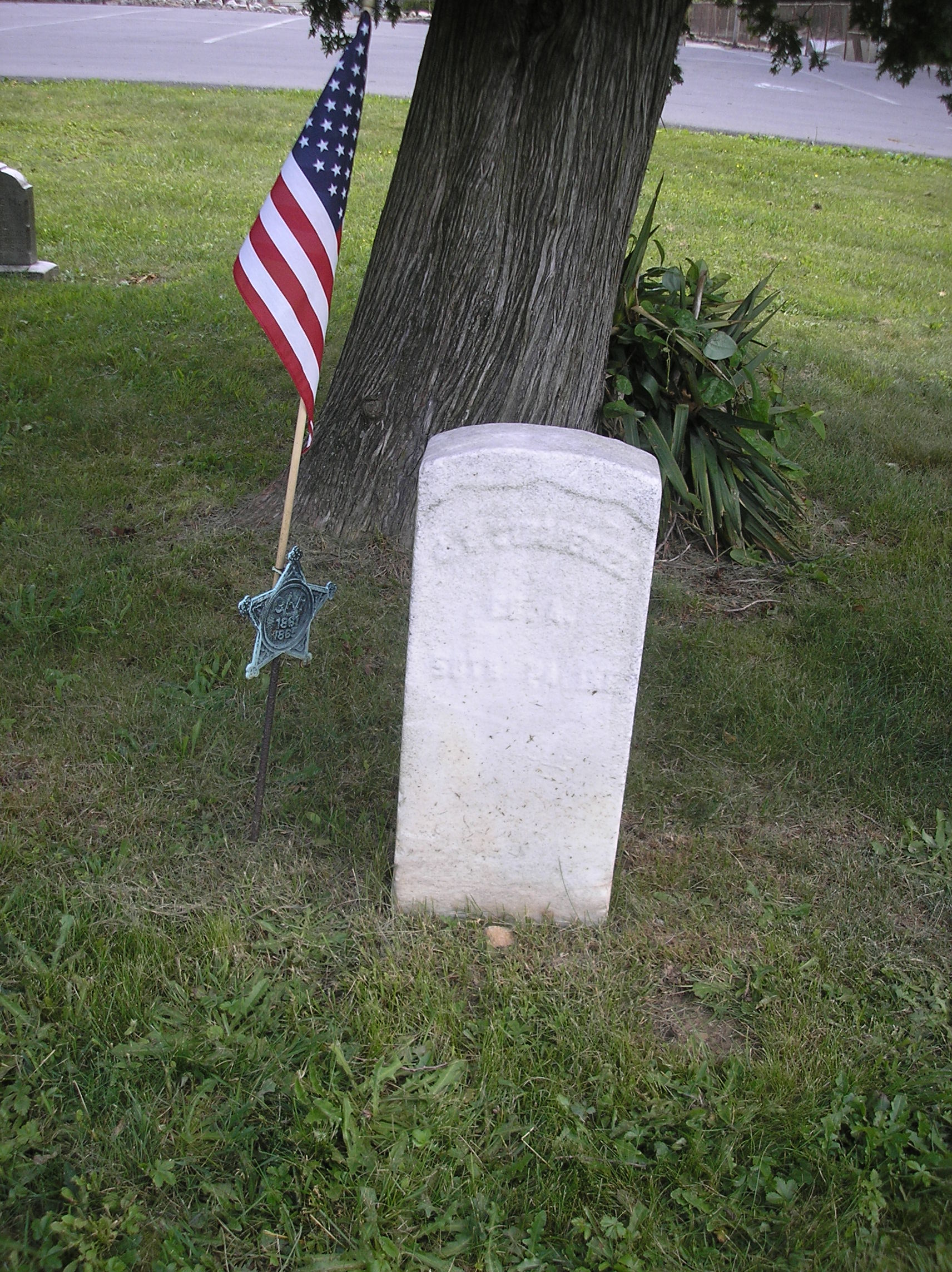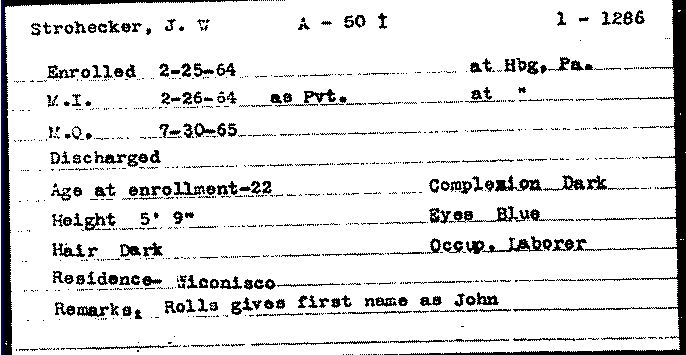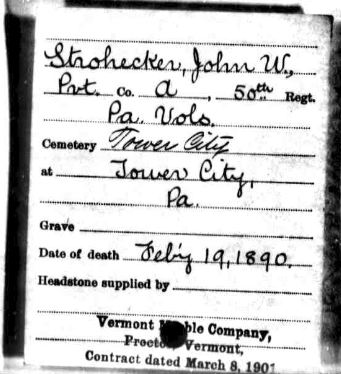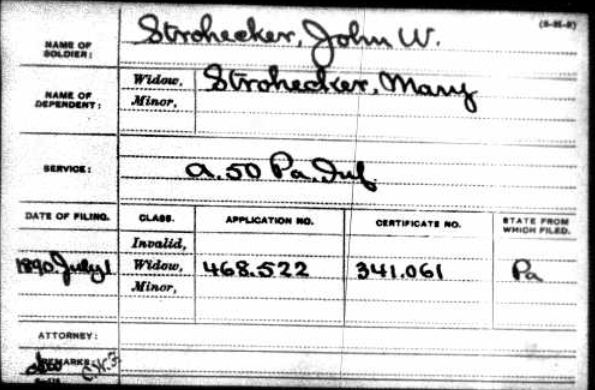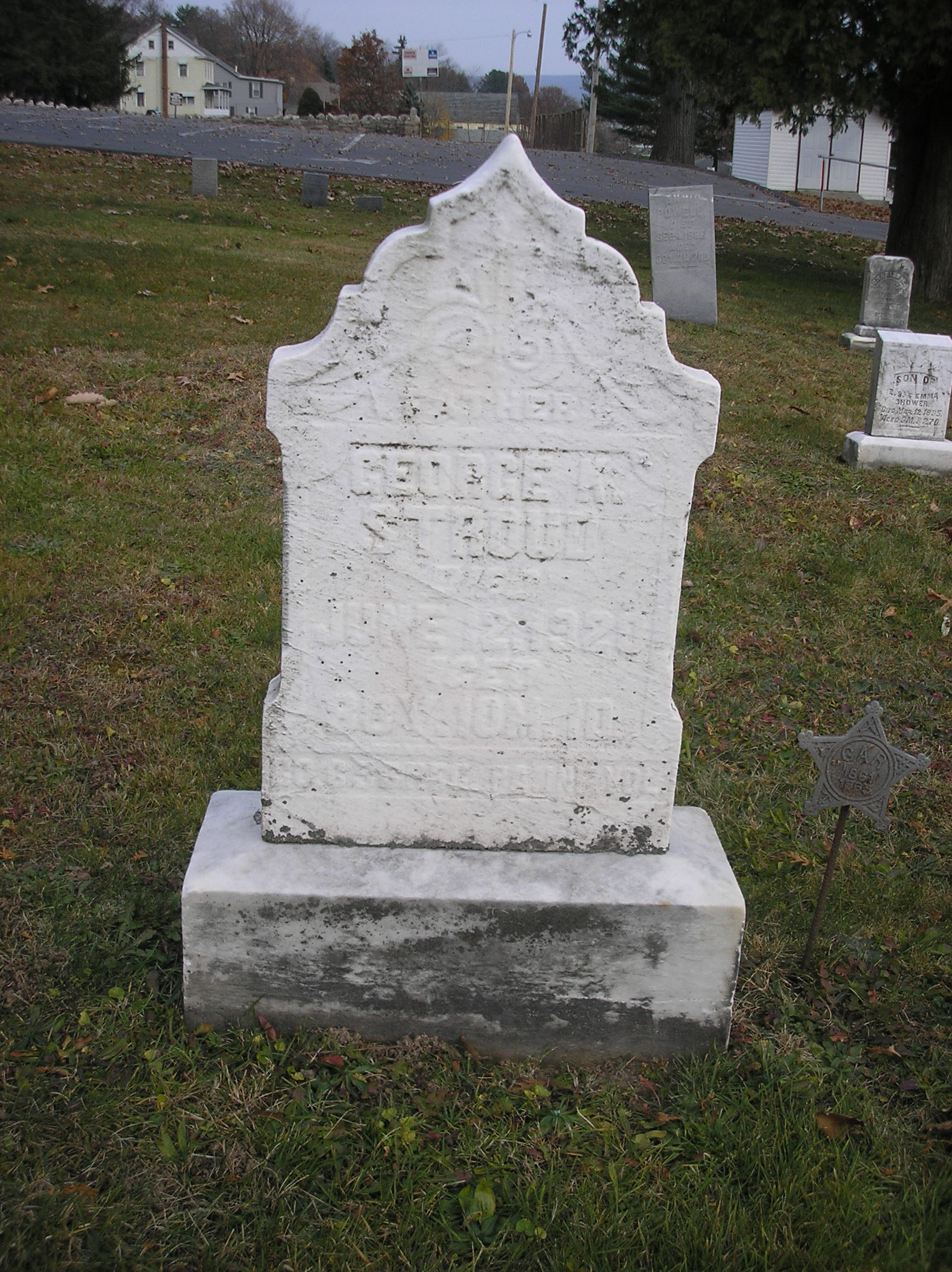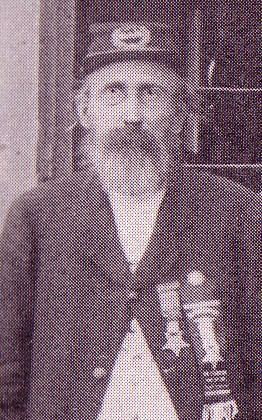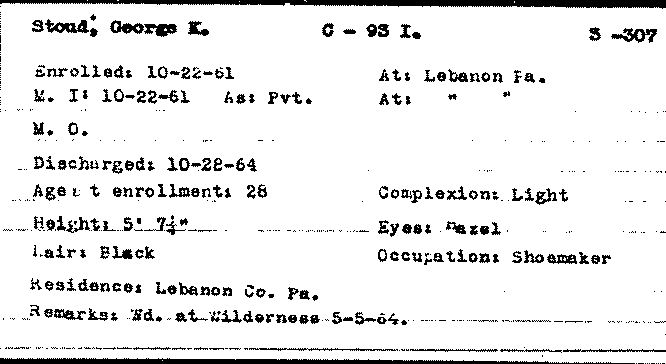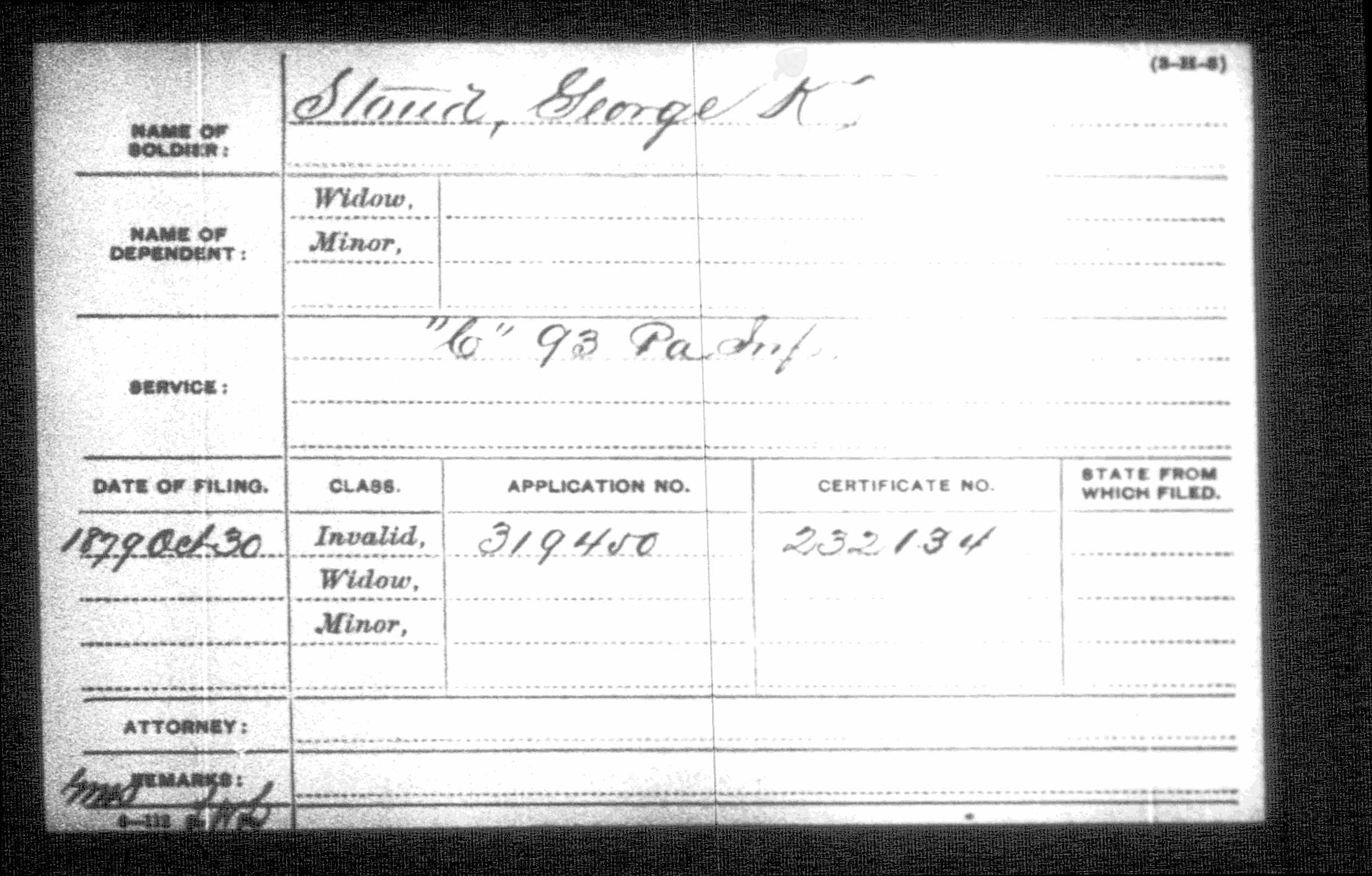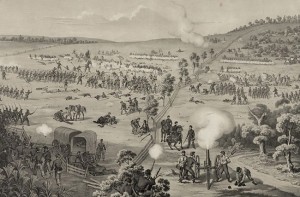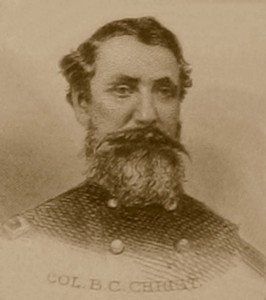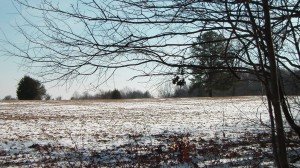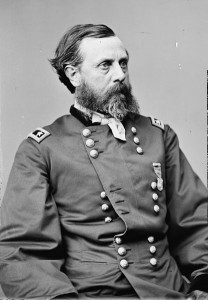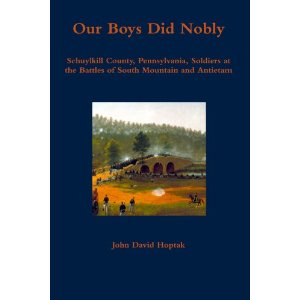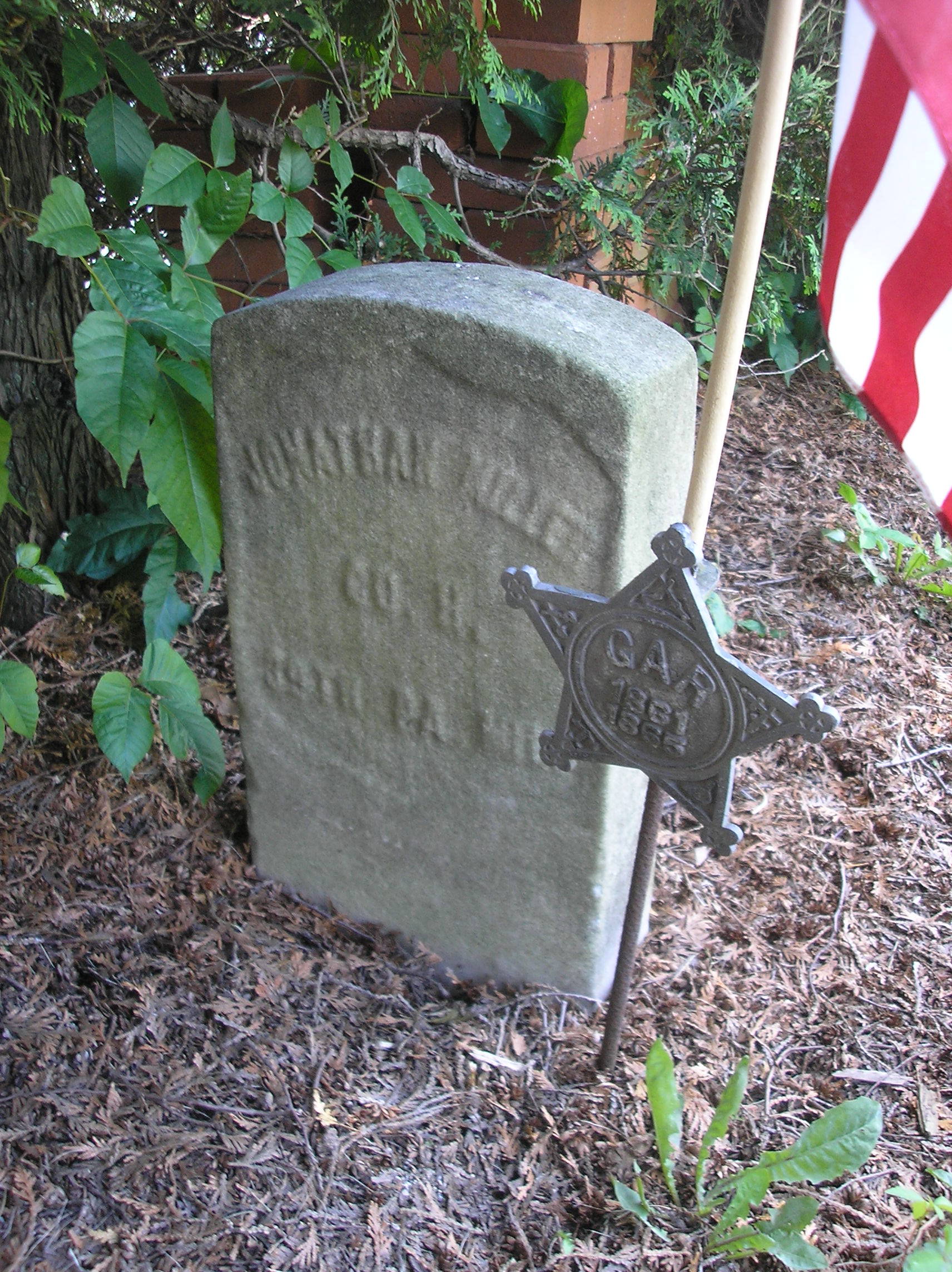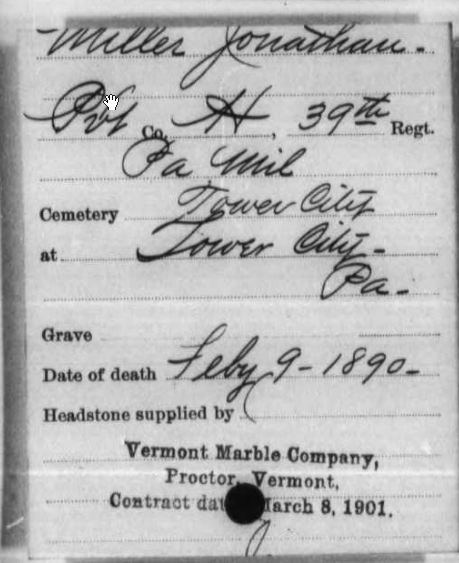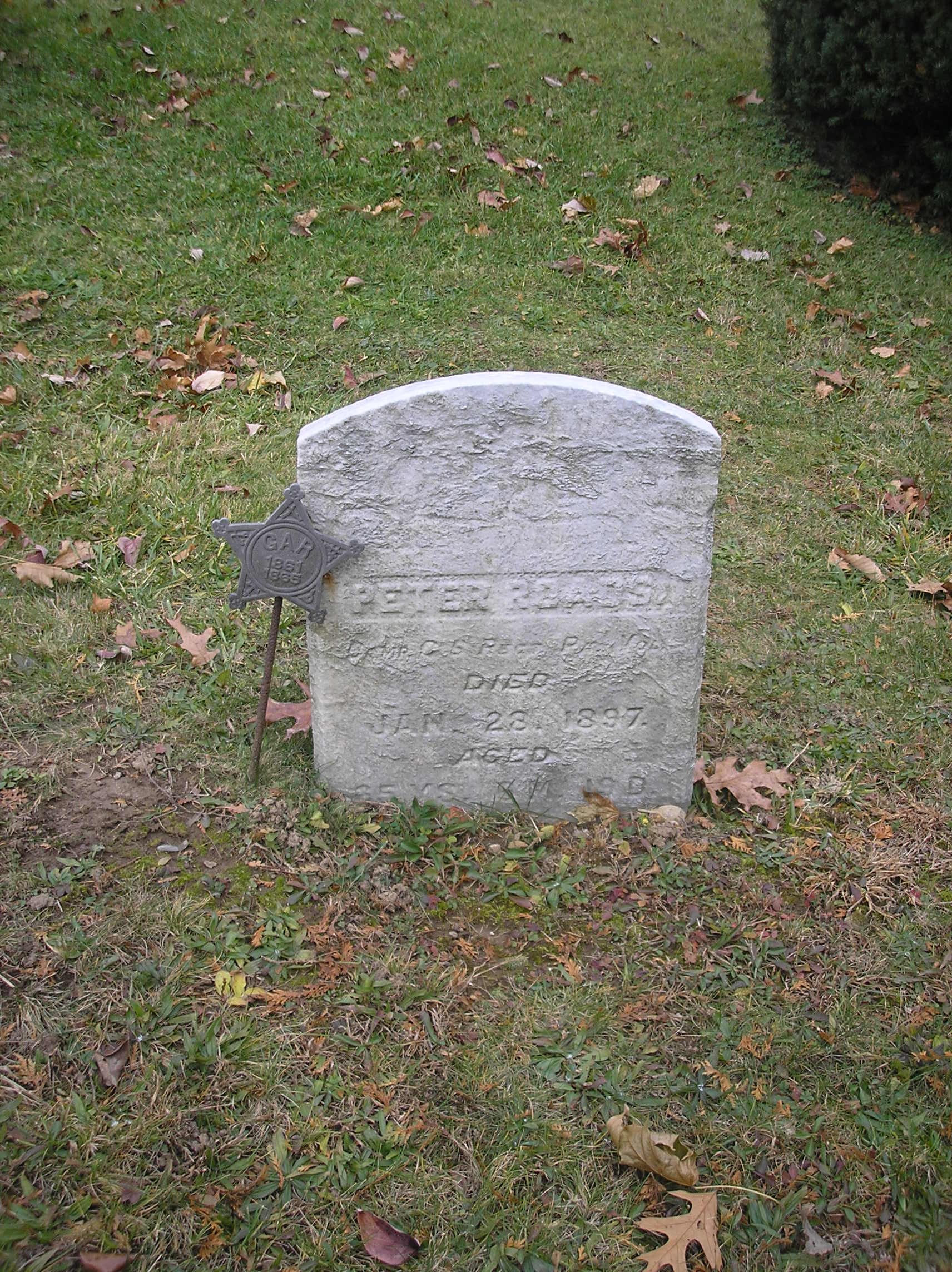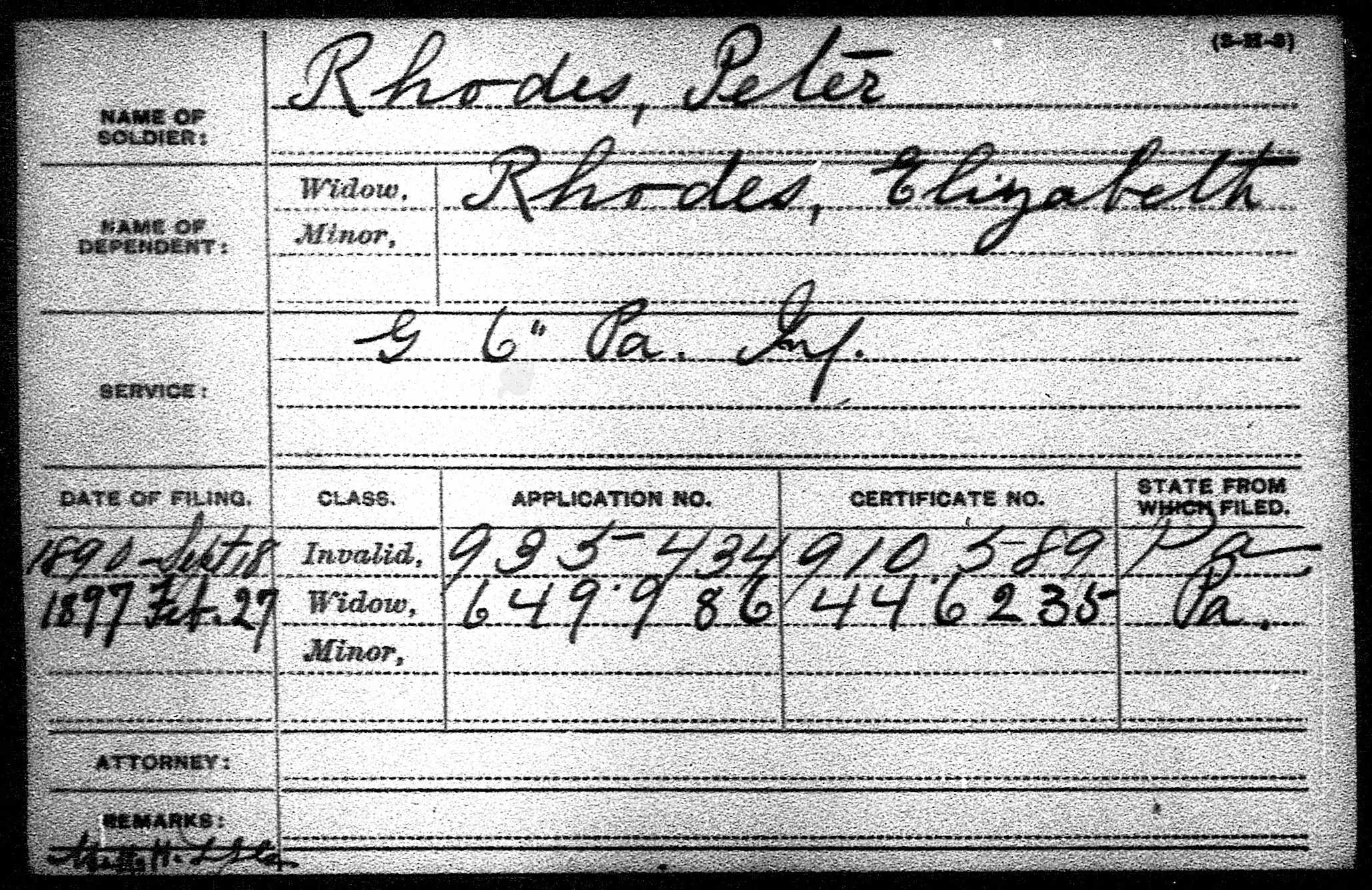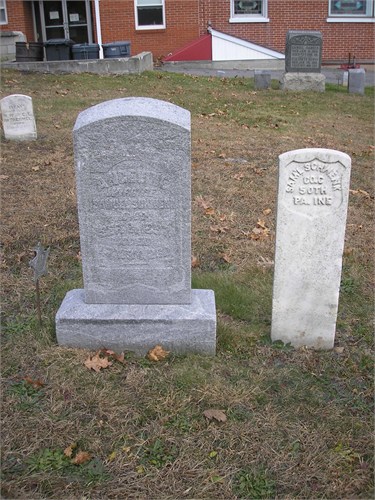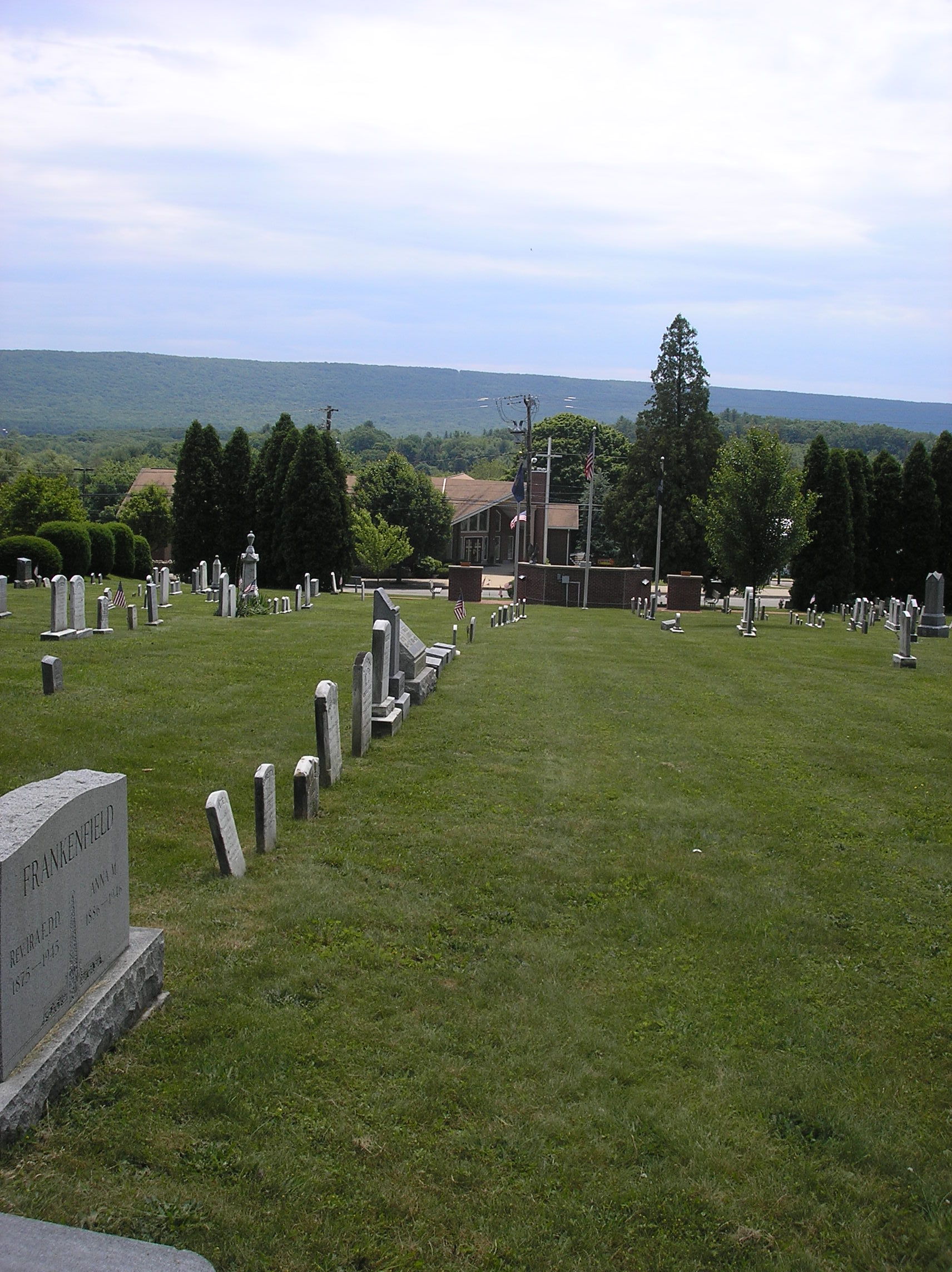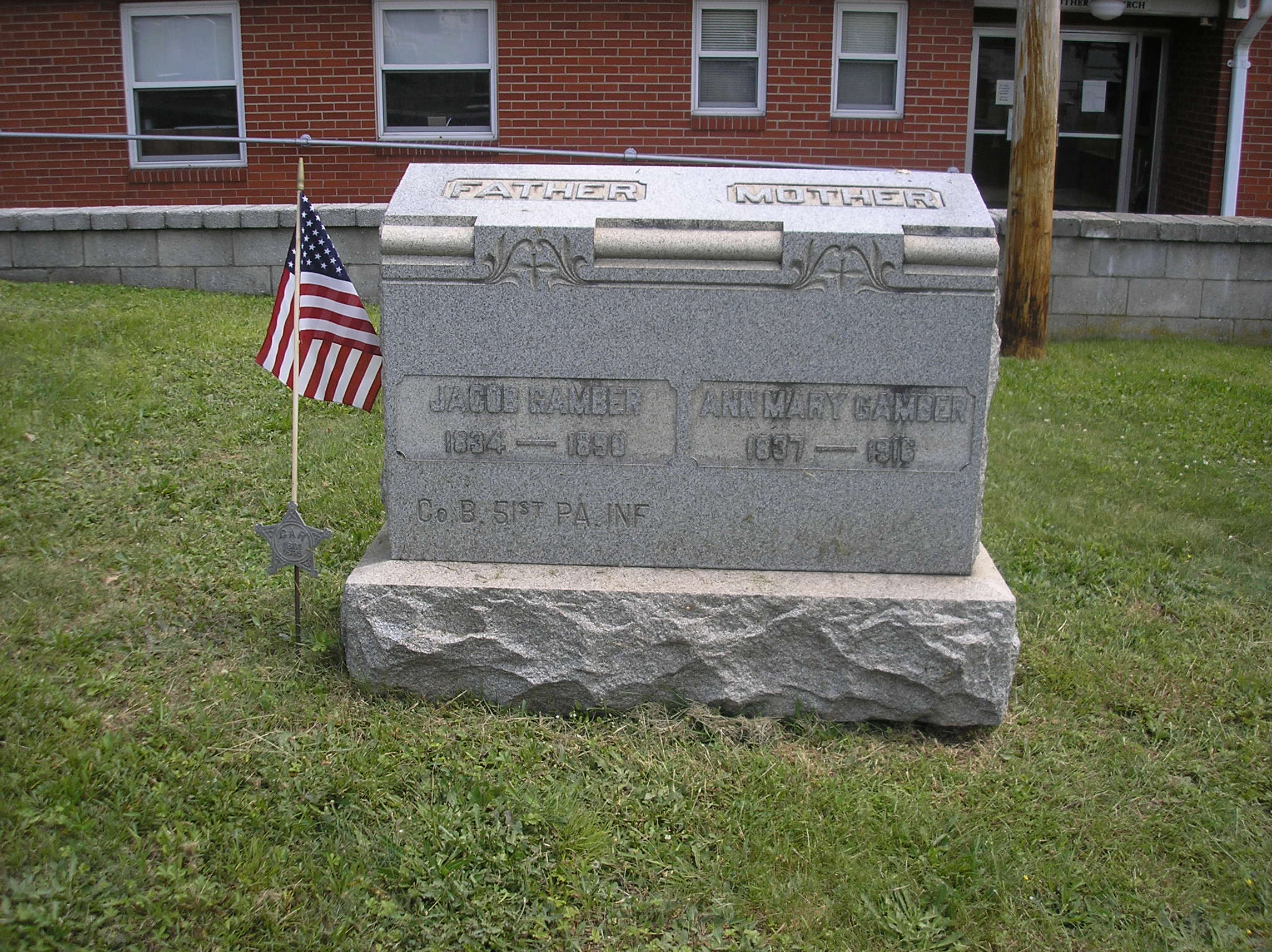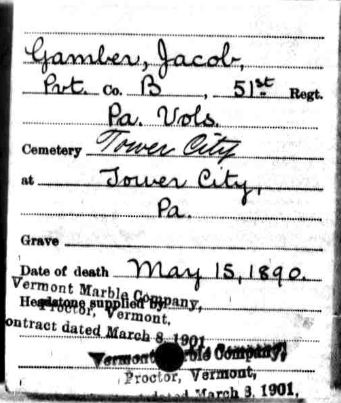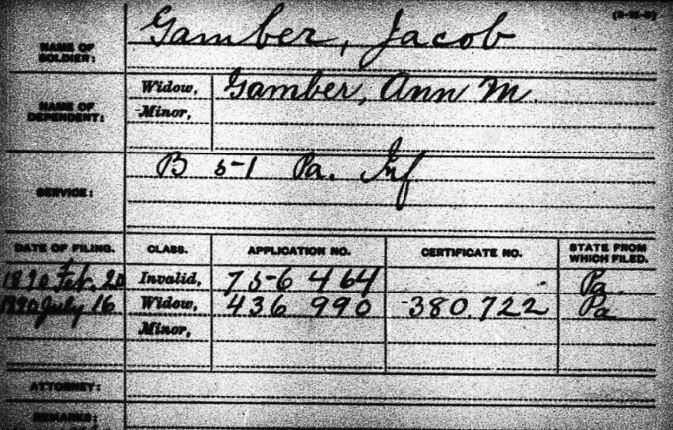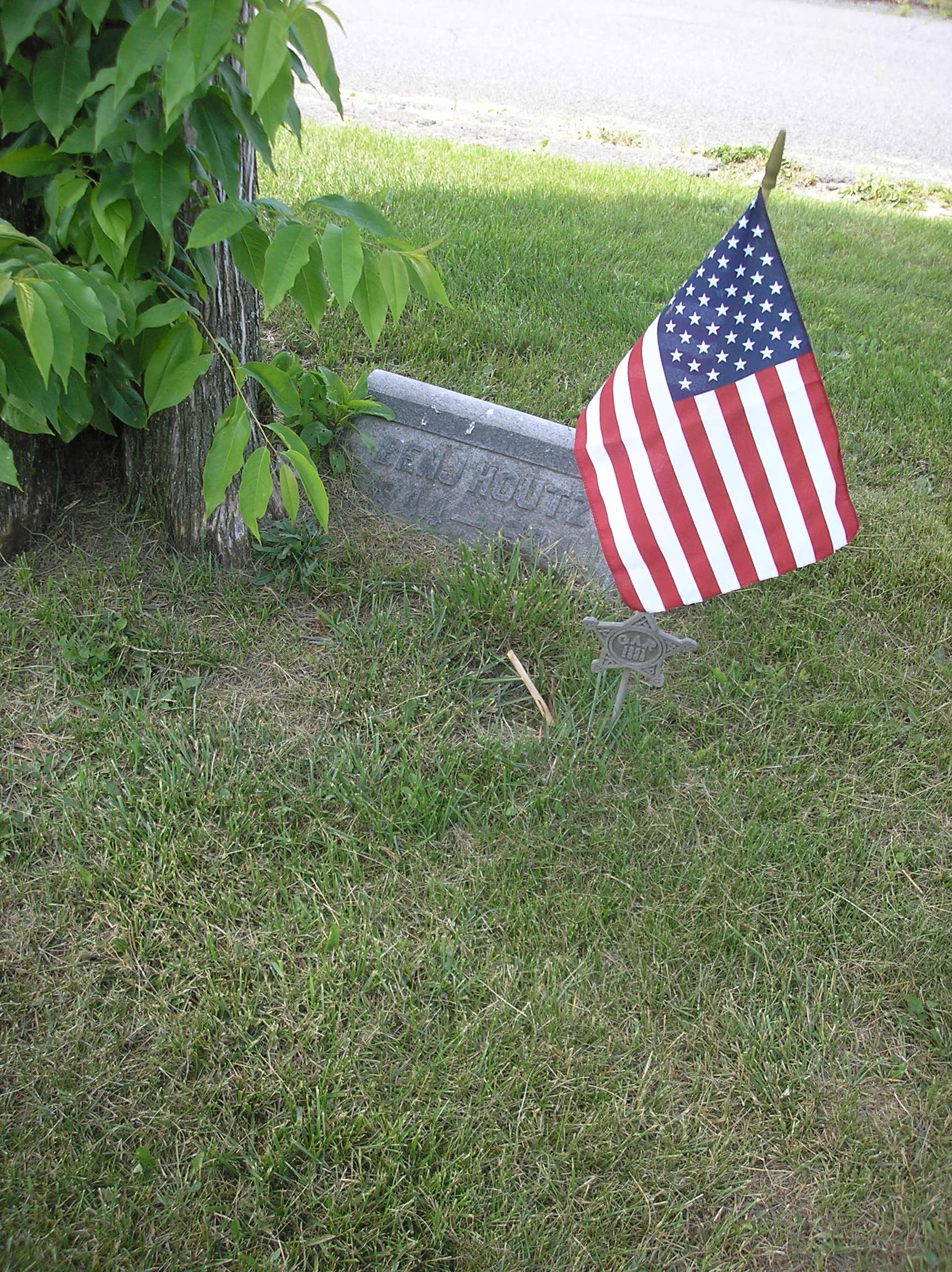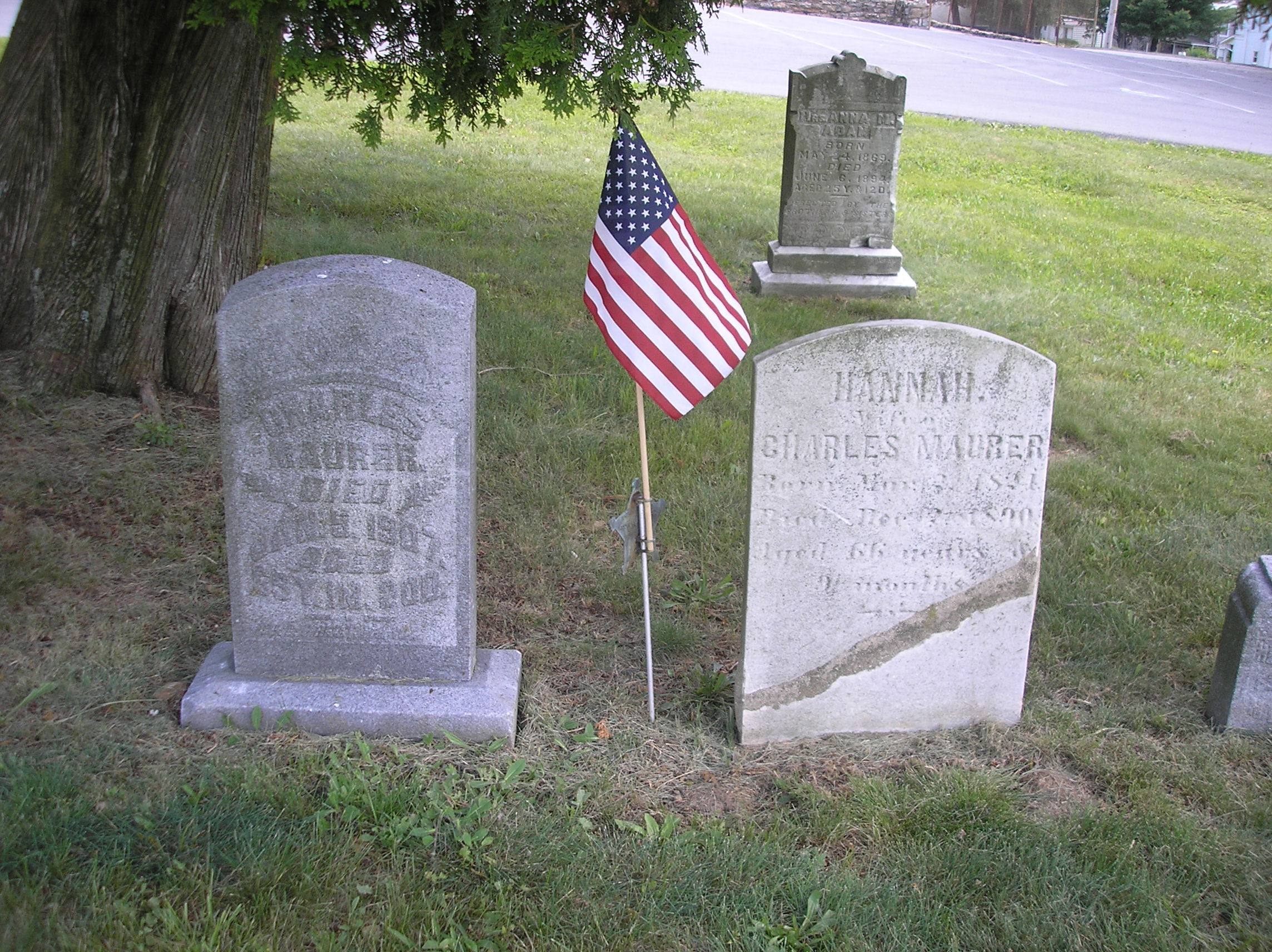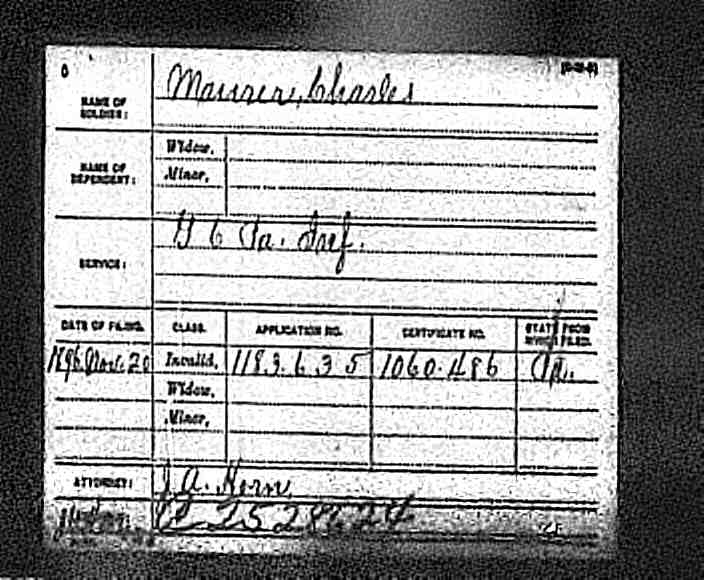Civil War Veteran Burials at St. Paul’s Cemetery, Tower City (Part 5 of 6)
Posted By Norman Gasbarro on February 14, 2013
(Part 5 of 6). St. Paul’s Lutheran Church Cemetery is located in Tower City, Schuylkill County, Pennsylvania, at the corner of East Grand Avenue (U.S. Route 209) and North 4th Street. At the front of the cemetery, along East Grand Avenue, is the Tower City, Porter Township and Rush Township Veterans Memorial, which was previously featured here in a series of posts with each of the name plates of the Civil War veterans from the area. This is the last of the four major cemeteries in the Tower City area that will be examined for Civil War burials. No doubt there are other cemeteries and family cemeteries in the area where Civil War veterans were buried – some still undiscovered – but for now, the presentation of the St. Paul’s Cemetery will complete the photographic tour and brief description of each of the Tower City area veterans’ war service that began months ago and included the area memorial, Greenwood Cemetery in Tower City (5 parts), St. Peter’s U.C.C. Cemetery in Reinerton (3 parts), and the Grace United Evangelical Cemetery in Muir (2 parts).
Research continues on each of the Tower City area veterans and as a result of the analysis of the tombstone inscriptions at St. Paul’s Cemetery, some new information about them has been added to the Civil War Research Project. But, much remains to be discovered. Especially needed are pictures of the veterans and their families, stories, and any other information that would help in an understanding of this generation of Americans who fought to preserve the Union more than 150 years ago. As always, the Project relies on local researchers and family members who are willing to come forward and share information about these men and their families. By sharing the information, we increase our knowledge.
Some of the now-known information about the veterans buried at St. Paul’s Cemetery is presented with the grave marker pictures. Links are provided to where the veteran previously was mentioned in blog post articles, and some of the past-known information is repeated. In addition, new Project file numbers are added. When corresponding by e-mail regarding information available on a specific veteran, it is helpful to use the file number (if known), especially in the many cases where there is more than one veteran with the same name.
Three more veterans’ graves are presented today.
—————————–
WILLIAM THOMPSON (? – ?)
Not much is known about the William Thompson whose widow may be buried at St. Paul’s Cemetery in Tower City. No headstone which bears his name has been seen there, with the exception of a stone for an Isabella Thompson, on whose stone it is noted that she was the wife of W. S. Thompson. A small stone in front of Isabella’s stone beard the initials “I. T” and it is at that stone where a G.A.R. star and flag holder has been placed.
In a prior post on this blog, the following was stated:
William Thompson of Tower City was born about 1839 or 1840 in Schuylkill County, Pennsylvania, the son of Alexander Thompson (1805-1873), an immigrant from Scotland who emigrated to America in 1828 to engage in various pursuits including flour milling, lumbering and mining. William Thompson‘s mother was the first wife of Alexander, Isabella Stoddart Pennman (1816-1851). He was one of nine children and his brother Alexander F. Thompson (1845-1925) was featured in yesterday’s post on this blog. After the death of William’s mother, Alexander Thompson (1805-1873) re-married and with his 2nd wife, Mary Bast, fathered another large family, giving William about ten more siblings.
William Thompson enrolled in the 96th Pennsylvania Infantry, Company G, at Lykens, Dauphin Co., Pennsylvania, on 23 September 1861, and then traveled to Pottsville, where he was mustered into service.
The record at the Pennsylvania Archives indicates that William Thompson died at Frederick, Maryland, on 18 December 1862. The cause of death is not stated in the Pennsylvania Archives’ Veterans’ Card File. The registers for this company and regiment do not record his death, probably because a few years later, the records were transferred to the 95th Pennsylvania Infantry, Company G, when the companies were consolidated. All those who served the duration of the war were later transferred to the 95th Pennsylvania Infantry. The handwritten notation on the Veterans’ File Card (above) was placed there by someone doing later research on William Thompson and was not part of the original indexing project conducted at the Archives.
Burial took place in the Antietam National Cemetery, in Section 26, Lot E, Grave 480, and a “military-issue” grave marker was placed on his burial plot….
After William”s death, his father Alexander Thompson (1805-1873) and step-mother Mary [Bast] Thompson continued to have children, one of whom, born about 1866, was named Abraham Lincoln Thompson, after the martyred president.
No Pension Index Card has been located for William Thompson. This may indicate that he was never married and left no minor children. His mother would have been eligible for a pension, if his death was war-related, and if she had no other means of support. However, William’s mother had died before the war and his father had re-married. The step-mother could make no claim as a result of William’s sacrifice.
It is possible that there are a number of errors in the above, previously presented information.
If William Thompson, the husband of Isabella Thompson who is buried at St. Paul’s in Tower City, died during the Civil War, then there must be another person with the same name, since, in the 1890 census for Tower City, there is a William Thompson who is alive and who claimed service in the 39th Pennsylvania Infantry (Emergency of 1863):
The name in the 1890 census for Tower City was first reported as William K. Thompson and then changed to William W. Thompson, and the dates of service in this emergency militia regiment are given as 29 June 1863 to 6 August 1863. A David P. Thompson appears as the next name on the sheet, a possible relation, who served as a 1st Lieutenant in the same emergency regiment. That David P. Thompson also served in the 96th Pennsylvania Infantry and appears to have been discharged in December 1862 – a few days after the death of the William Thompson who was also in the 96th Pennsylvania Infantry.
William W. Thompson was suffering from “chronic piles” (hemorrhoids) in 1890, which he attributed to his Civil War service. No pension record has been located for this William W. Thompson, which would be consistent with the requirement that at least three months service was needed in order to qualify, the emergency militia only serving for about six weeks.
A final confusing factor resulting from the information on the stone of Isabella Thompson at St. Paul’s Cemetery is her birth date of 15 July 1863 and the fact that she died at the age of 21 on 24 December 1884. While it would not be that unusual for a Civil War veteran to take a bride much younger than he, it is a curious fact that his bride would have been born in the middle of his brief Civil War service.
See also: Tower City, Porter and Rush Township Civil War Veterans – Part 11 ; 2012 Additions to Civil War Veterans List – T to V ; William Thompson and Elizabeth Thompson Kimmel ; Alexander F. Thompson – Senator and Attorney ; Best of 2011 – Lykens G.A.R. Monument ; Lykens G.A.R. Building – Another Look ; Death & Funeral of John C. Miller ; Tower City – Porter Township Centennial – Civil War Veterans List; and Old Soldiers Ousted from Pottsville Armory . [File: CW#T027].
——————————
GEORGE W. WAGNER (? – ?)
G. W. Wagner is buried in St. Paul’s Cemetery with a headstone that reads, Company I, 84th Pennsylvania Infantry. There is a G.A.R. star-flag holder in front of the stone.
On 14 January 1870, an application was made to the Pension Bureau for the support of minor children on behalf of their father, George Wagner, who had served in Company I of the 84th Pennsylvania Infantry (in addition to the 81st Pennsylvania Infantry, Company I), with his death date given as 25 October 1863 in Schuylkill County. It has to be presumed that this is the same G. W. Wagner who is buried in the St. Paul’s Cemetery in Tower City, with the marker indicating service in the 84th Pennsylvania Infantry. The pension for minors’ support was granted. The Pension Index Card shown above is from Fold3.
If George Wagner served in the 84th Pennsylvania Infantry, Company I, (or in the 81st Pennsylvania Infantry,, Company I) he was not located in the Pennsylvania Veterans’ Index Cards (Pennsylvania Archives), in Bates, or in the Registers of Pennsylvania Volunteers (Pennsylvania Archives). His name was located in the database entitled “U.S. Civil War Soldiers, 1861-1865,” available on Ancestry.com, and the alternate names of George Wagoner and George Waggoner were given. These alternate spellings were also not found in the the previously mentioned sources.
Since G. W. Wagner who is buried in St. Paul’s Cemetery has a government-issued headstone, a search was made for the application and the following was located:
Curiously, there is a different date of death on the application – 6 May 1864. Left with conflicting information and several dead ends in trying to locate additional military information, the information thus found is presented here in the hope that a reader will come forward with the correct death date and enlighten the record of the veteran who is buried in St. Paul’s Cemetery in Tower City as G. W. Wagner, who served in Company I of the 84th Pennsylvania Infantry.
See also: Tower City, Porter and Rush Township Civil War Veterans – Part 11 and Tower City – Porter Township Centennial – Civil War Veterans List. [File: CW#W005].
—————————–
HENRY M. WITMER (1834-1885)
This could be another case of more than one person with the same name. The Henry Wittmer (or Henry Witmer) who is buried in the St. Paul Cemetery in Tower City, served in the 177th Pennsylvania Infantry, Company I and has been previously presented here in a discussion of the honorably discharged veterans from that regiment and company. In addition, the Henry Witmer, who appears to be the same person, was the subject of a prior post.
Henry Witmer (above) is recognized on the Tower City Veterans’ Memorial.
See also: Gratz During the Civil War – Henry M. Witmer, Saddle & Harness Maker and Tower City – Porter Township Centennial – Civil War Veterans List. [File: CW#W172]
—————————–
Concludes tomorrow…
To access other parts of this series on St. Paul’s Cemetery, click here.
 ;
;
